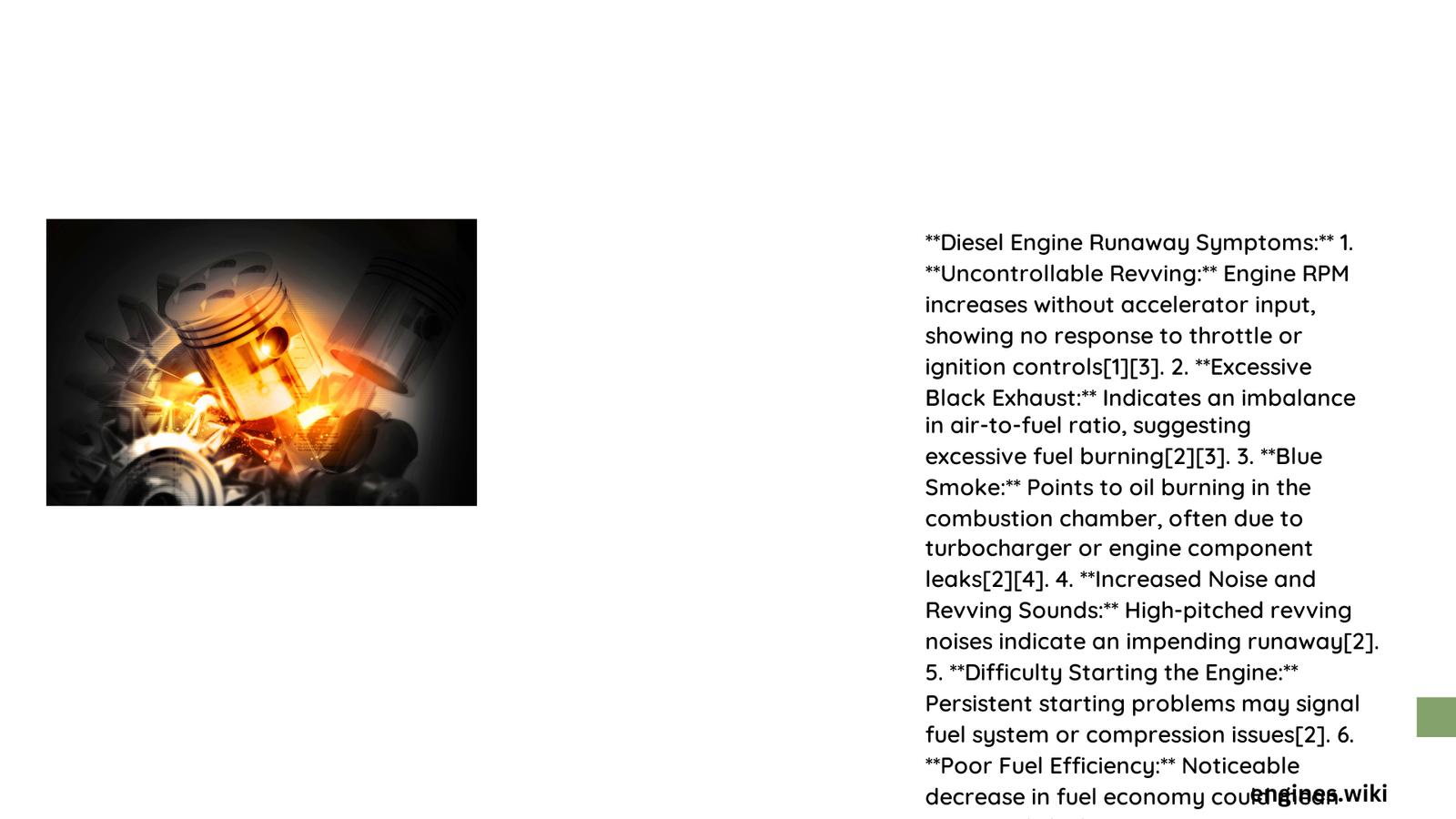Diesel engine runaway is a catastrophic mechanical phenomenon where an engine accelerates uncontrollably, consuming alternative fuel sources like engine oil, potentially causing severe damage or complete engine destruction. Recognizing early symptoms can prevent catastrophic failure, protect vehicle integrity, and ensure driver safety through immediate intervention and professional assessment.
What Are the Primary Diesel Engine Runaway Symptoms?
How Do RPM Fluctuations Indicate Runaway?
- Uncontrolled RPM acceleration beyond normal operating ranges
- Engine continues running even after ignition is turned off
- Rapid, unpredictable speed increases without driver input
What Unusual Sounds Suggest Engine Runaway?
- Loud metallic banging noises
- Screeching sounds from internal components
- High-pitched whining or grinding mechanical sounds
What Visual Indicators Reveal Potential Runaway?
| Symptom | Description | Severity Level |
|---|---|---|
| Exhaust Smoke | Thick black or blue smoke | Moderate |
| Flame Emission | Visible flames from exhaust | High |
| Oil Consumption | Rapid oil depletion | Critical |
What Mechanical Signs Suggest Imminent Failure?
- Excessive vibration in engine compartment
- Sudden temperature increases
- Visible oil leakage around seals and gaskets
What Causes Diesel Engine Runaway?

How Does Fuel Contamination Trigger Runaway?
- Oil entering combustion chamber through:
- Worn piston rings
- Damaged turbocharger seals
- Crankcase ventilation system failures
- Uncontrolled alternative fuel sources sustaining combustion
What Role Do Mechanical Failures Play?
- Malfunctioning fuel injectors
- Compromised high-pressure fuel pumps
- Turbocharger seal degradation
- Compromised air intake systems
How Can Diesel Engine Runaway Be Prevented?
What Maintenance Strategies Reduce Risk?
- Regular comprehensive engine inspections
- Adherence to manufacturer-recommended service schedules
- Use of high-quality lubricants and diesel fuel
- Proactive component replacement
What Emergency Shutdown Techniques Exist?
- Install positive air shut-off valves
- Manual air intake blockage
- Engage high gear with applied brakes
- Immediate vehicle shutdown procedures
What Immediate Actions Should Drivers Take?
How to Respond During a Runaway?
- Remain calm
- Safely pull vehicle to side of road
- Turn off ignition
- Evacuate vehicle
- Call emergency services
- Do not attempt to restart engine
What Professional Interventions Are Recommended?
- Comprehensive engine diagnostic assessment
- Professional mechanical evaluation
- Potential component replacement
- Detailed failure mode analysis
Technical Diagnostic Approach
What Tools Help Identify Runaway?
- Engine performance analyzers
- Exhaust gas measurement equipment
- Compression testing tools
- Advanced diagnostic scanning systems
What Metrics Indicate Potential Runaway?
- Abnormal RPM fluctuations
- Unexpected oil consumption rates
- Irregular combustion chamber pressures
- Turbocharger seal integrity measurements
Safety Considerations
What Are the Primary Risk Factors?
- Potential vehicle fire
- Catastrophic engine failure
- Personal injury risks
- Significant financial repair costs
How Critical Is Immediate Response?
- Seconds matter during runaway
- Professional intervention crucial
- Preventive maintenance paramount
References:
– Understanding Diesel Engine Runaway
– Diesel Runaway Prevention Strategies
– Comprehensive Diesel Engine Diagnostics
